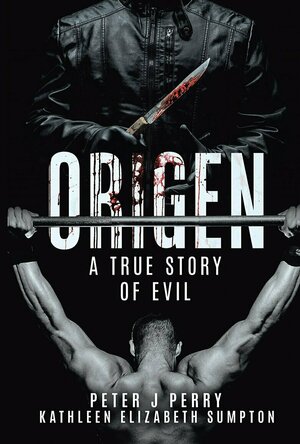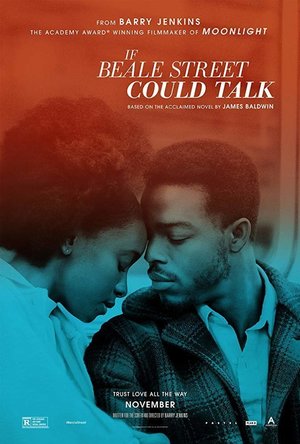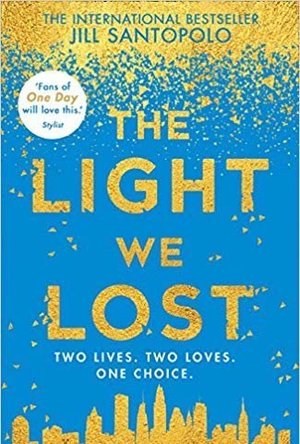Bob Mann (459 KP) rated If Beale Street Could Talk (2018) in Movies
Sep 28, 2021
‘Is there not one righteous among them?”
― James Baldwin, If Beale Street Could Talk
Beale Street refers to the jumpin’ heart of Memphis where Louis Armstrong was born. As explained in text from Baldwin’s source book (requiring a speed read!) it’s used as a metaphor for the birthplace of every black person in America. (“Every black person in America was born on Beale Street“). But the story is set in Harlem, New York, and with this intellectual stretch, before I even get past the title, I am immediately reaching for the “P-word”, of which more later.
The Plot
Tish (KiKi Layne) is 19 and in love with her lifelong friend ‘Fonny’ (Stephan James). So much in love in fact (and so careless) that Tish is now pregnant with his child. Tish must break this news to both families herself, since Fonny is inside awaiting trial for a vicious rape that he claims he didn’t commit. Tish and their joint families are trying to help, but can Fonny be released in time to see the birth of his child? Or are the institutions so set against him that release is impossible and death row might await?
Interwoven with Love and Anger
At its heart, this film portrays a truly beautiful love story. Tish and Fonny (both adorably played by the young leads) are friends becoming more than friends. We see their emerging love through flashback scenes. Some of these, particularly one on a metro train, are exquisitely done; long gazes into eyes, starting as one thing and ending as another.
In another scene, Fonny takes Tish’s virginity, and it’s done with style, taste and finesse. For younger teens this should be compulsory viewing as an antidote to all the horrible porn they are seeing on the internet: THIS is what sex, based on a foundation of true love, is all about. (The film is UK15 rated for “infrequent very strong language, strong sex” – I actually agree with the rating for the language (and actually I think an act of marital violence should also have also been referenced)…. but not for the sex, which should be 12A).
It’s a love story then? Well, yes, but offset against that, it’s a very angry film, seething with rage about how the police force and the justice system is set ‘against the black man’. Director Barry Jenkins (of – eventual – Oscar winner “Moonlight” fame) has a message to impart and he is intent on imparting it.
A great ensemble performance
The film didn’t get a SAG nomination for the ensemble cast, but it almost feels that they missed out here. As well as the two young leads being spectacular, the whole of the rest of the cast really gel well together, particularly the respective parents: Colman Domingo (“Selma“) as Tish’s father Joseph; Regina King as Tish’s mother Sharon; Michael Beach (“Patriots Day“) as Fonny’s father Frank and Aunjanue Ellis as his bible-bashing mother. A dramatic scene where they all collectively hear the news about the pregnancy is both comical and shocking in equal measure.
Poor sound mixing
If this film gets an Oscar nomination for sound, I’ll frankly be cross! There is significant use of sonorous, bass-heavy music and effects (including a lovely cello theme by Nicholas Britell) – all very effective; there is a lot of earnest and quietly spoken dialogue between the characters – also moody and effective. Unfortunately the two are mixed together in some scenes and frankly I couldn’t make out what was being said. Most frustrating.
In addition, there is voiceover narration from Tish (if you follow my blog regularly you KNOW what I think about that!). Actually, this isn’t as overly intrusive as in films like “The Hate U Give“, but it sounds like it was recorded in a dustbin! It’s a bit like that effect you get with headphones where the plug isn’t quite in the socket, and everything sounds way off and tinny. When combined with Layne’s accent the effect, again, made the dialogue difficult to comprehend.
The c-word and the n-word
There’s a degree of bad language in the film, albeit mild in comparison to “The Favourite“! Tish’s sister (Teyonah Parris) uses the c-word in one very funny dissing of Fonny’s ‘up-themselves’ sisters (Ebony Obsidian and Dominique Thorne). But the n-word is used repeatedly during the film, and that I can never get used to. I ‘get it’ (in the sense that I understand the perception) that this is a word that ‘only black people can use between themselves’. But this just feels elitist and wrong to me. At a time when Viggo Mortensen gets crucified for using it once (while being descriptive and in-context) during a press junket for “Green Book“, I just feel that if a word is taboo it should be taboo, period.
The p-word
My p-word here is “pretentious”. Barry Jenkins clearly feels he has something to prove after the success of “Moonlight“, and there are certainly moments of directorial brilliance in the film. As previously mentioned, the sex scene is one of the best I’ve seen in a long while. Also beautifully done are a birthing scene and two confrontational scenes in Puerto Rico. But there are also moments that seem to be staged, artificial and too ‘arty’ for their own good. Any hidden meaning behind them completely passed me by. (Examples are Sharon’s wig scene and a pan around Fonny’s wood sculpture). It all seems to be “trying too hard”.
Hate for the police is also writ large on the film, with every discriminatory police officer in the whole of the US embodied in the wicked sneering face of the police office Bell (Ed Skrein).
A platform that should be used for more than ranting
This is a film written and directed by an American black man (Jenkins) and largely fully cast with American black people. And I’m a white Englishman commenting on it. I’m clearly unqualified to pass judgement on how black America really feels about things! But comment I will from this fug of ignorance.
It feels to me that the “Black Lives Movement” has given, at long last, black film-makers like Jenkins a platform in cinema to present from. This is a great thing. But I’m sensing that at the moment the tone of the output from that platform (such as this film) seems to me heavily tinged with anger: a scream of frustration about the system and racial injustice over the years. It’s the film-makers right to make films about subjects dear to them. And I’m sure this summer we’ll sadly again see atrocities as previously seen in the likes of Ferguson and Dallas, fuelling the fire of hate. But I would personally really like to see someone like Jenkins use his undoubted talents to make a more uplifting film: a film reflecting the more positive strives that are happening in society, allowing for people of all races and all sexual orientations to make their way in business (not drug-running or crime!) and/or life in general. Those good news stories – the positive side of race relations – are out there and my view is that someone like Barry Jenkins should be telling them.
Final thoughts
I wasn’t as much of a fan of “Moonlight” as the Academy, and this film also left me conflicted. The film is well-made and the cast is very engaging. It also has a love story at its heart that is moody but well-done. Overall though the movie felt over-engineered and a little pretentious, and that knocked it down a few pegs for me.

ING Australia Banking
Finance and Lifestyle
App
User-friendly iPhone and iPad app for ING accounts including transaction, savings, business, home...
Cody Cook (8 KP) rated Writings Of Thomas Paine Volume 4 (1794 1796); The Age Of Reason in Books
Jun 29, 2018
The book seems to have had three major objectives: the support of deism, the ridicule of what Paine found loathsome in Christian theology, and the demonstration of how poor an example the Bible is as a reflection of God.
In a sense, Paine's arguments against Christian theology and scripture were meant to prop up his deistic philosophy. Paine hoped that in demonizing Christianity while giving evidences for God, he would somehow have made the case for deism. But this is not so. If Christianity is false, but God exists nonetheless, we are not left only with deism. There are an infinite number of possibilities for us to examine regarding the nature of God, and far too many left over once we have eliminated the obviously false ones. In favor of deism Paine has only one argument—his dislike of supernatural revelation, which is to say that deism appeals to his culturally derived preferences. In any case, Paine's thinking on the matter seemed to be thus: if supernatural revelation could be shown to be inadequate and the development of complex theology shown to be an error, one could still salvage a belief in God as Creator, but not as an interloper in human affairs who required mediators.
That being said, in his support of deism, Paine makes some arguments to demonstrate the reasonableness in belief in, if not the logical necessity of the existence of, God which could be equally used by Christians.
For instance, just as the apostle Paul argued in his epistle to the Romans that, "what can be known about God is plain to [even pagans], because God has shown it to them. For his invisible attributes, namely, his eternal power and divine nature, have been clearly perceived, ever since the creation of the world, in the things that have been made" (Romans 1:19-20, ESV), so also Paine can say that, "the Creation speaketh an universal language [which points to the existence of God], independently of human speech or human language, multiplied and various as they be."
The key point on which Paine differs from Paul on this issue is in his optimism about man's ability to reason to God without His assisting from the outside. Whereas Paul sees the plainness of God from natural revelation as an argument against the inherent goodness of a species which can read the record of nature and nevertheless rejects its Source's obvious existence, Paine thinks that nature and reason can and do lead us directly to the knowledge of God's existence apart from any gracious overtures or direct revelation.
On the witness of nature, Paine claims, and is quite correct, that, "THE WORD OF GOD IS THE CREATION WE BEHOLD: And it is in this word, which no human invention can counterfeit or alter, that God speaketh universally to man." What is not plainly clear, however, is that man is free enough from the noetic effects of sin to reach such an obvious conclusion on his own. Indeed, the attempts of mankind to create a religion which represents the truth have invariably landed them at paganism. By paganism I mean a system of belief based, as Yehezkel Kaufmann and John N. Oswalt have shown, on continuity.iv In polytheism, even the supernatural is not really supernatural, but is perhaps in some way above humans while not being altogether distinct from us. What happens to the gods is merely what happens to human beings and the natural world writ large, which is why the gods are, like us, victims of fate, and why pagan fertility rituals have attempted to influence nature by influencing the gods which represent it in accordance with the deeper magic of the eternal universe we all inhabit.
When mankind has looked at nature without the benefit of supernatural revelation, he has not been consciously aware of a Being outside of nature which is necessarily responsible for it. His reasoning to metaphysics is based entirely on his own naturalistic categories derived from his own experience. According to Moses, it took God revealing Himself to the Hebrews for anyone to understand what Paine thinks anyone can plainly see.
The goal of deism is to hold onto what the western mind, which values extreme independence of thought, views as attractive in theism while casting aside what it finds distasteful. But as C.S. Lewis remarked, Aslan is not a tame lion. If a sovereign God exists, He cannot be limited by your desires of what you'd like Him to be. For this reason, the deism of men like Paine served as a cultural stepping stone toward the atheism of later intellectuals.
For Paine, as for other deists and atheists like him, it is not that Christianity has been subjected to reason and found wanting, but that it has been subjected to his own private and culturally-determined tastes and preferences and has failed to satisfy. This is the flipside of the anti-religious claim that those who believe in a given religion only do so because of their cultural conditioning: the anti-religionist is also conditioned in a similar way. Of course, how one comes to believe a certain thing has no bearing on whether that thing is true in itself, and this is true whether Christianity, atheism, or any other view is correct. But it must be stated that the deist or atheist is not immune from the epistemic difficulties which he so condescendingly heaps on theists.
One of the befuddling ironies of Paine's work is that around the time he was writing about the revealed religions as, “no other than human inventions set up to terrify and enslave mankind, and monopolize power and profit," the French were turning churches into “temples of reason” and murdering thousands at the guillotine (an instrument of execution now most strongly identified with France's godless reign of terror). Paine, who nearly lost his own life during the French Revolution, saw the danger of this atheism and hoped to stay its progress, despite the risk to his own life in attempting to do so.
What is odd is that Paine managed to blame this violent atheism upon the Christian faith! Obfuscated Paine:
"The Idea, always dangerous to Society as it is derogatory to the Almighty, — that priests could forgive sins, — though it seemed to exist no longer, had blunted the feelings of humanity, and callously prepared men for the commission of all crimes. The intolerant spirit of church persecution had transferred itself into politics; the tribunals, stiled Revolutionary, supplied the place of an Inquisition; and the Guillotine of the Stake. I saw many of my most intimate friends destroyed; others daily carried to prison; and I had reason to believe, and had also intimations given me, that the same danger was approaching myself."
That Robespierre's deism finally managed to supplant the revolutionary state's atheism and that peace, love, and understanding did not then spread throughout the land undermines Paine's claims. Paine felt that the revolution in politics, especially as represented in America, would necessarily lead to a revolution in religion, and that this religious revolution would result in wide acceptance of deism. The common link between these two revolutions was the idea that the individual man was sovereign and could determine for himself what was right and wrong based on his autonomous reason. What Paine was too myopic to see was that in France's violence and atheism was found the logical consequence of his individualistic philosophy. In summary, it is not Christianity which is dangerous, but the spirit of autonomy which leads inevitably into authoritarianism by way of human desire.
As should be clear by now, Paine failed to understand that human beings have a strong tendency to set impartial reason aside and to simply evaluate reality based on their desires and psychological states. This is no more obvious than in his own ideas as expressed in The Age of Reason. Like Paine's tendency to designate every book in the Old Testament which he likes as having been written originally by a gentile and translated into Hebrew, so many of his criticisms of Christian theology are far more a reflection upon himself than of revealed Christianity. One has only to look at Paine's description of Jesus Christ as a “virtuous reformer and revolutionist” to marvel that Paine was so poor at introspection so as to not understand that he was describing himself.
There is much more that could be said about this work, but in the interest of being somewhat concise, I'll end my comments here. If you found this analysis to be useful, be sure to check out my profile and look for my work discussing Paine and other anti-Christian writers coming soon.
Sassy Brit (97 KP) rated The Light We Lost in Books
Jun 6, 2019
^^ This story revolves around two lost souls, Lucy and Gabriel (Gabe) Samson who first meet during the Twin Towers terror attacks, and watch the horror unfold right in front of their eyes. Did fate bring these two together for a reason?
^^ Throughout the book we follow their relationship and learn how that first meeting on that fateful day effected them for the rest of their lives. Imagine being witness to something so horrifying. Surely it would affect you. Perhaps you’d want to live your life as if every day is your last, or you’ll go the other way and blame yourself for not being able to do anything to help. Even when you couldn’t have at the time. Survivors guilt, I think they call it.
^ These are the sort of issues, this couple face. You know they should be together, but they both need different things, so their lives are never as simple as you think they’re going to be.
^ I enjoyed how the author allowed this couple to search for what they wanted out of life, but they never truly forgot, or even stopped loving each other. Whenever they did meet, well, it was never the right time. Yet something in the universe, a powerful source, kept drawing them back into each other’s paths. Even when they’d both long gone their separate ways. Is it destiny? Or chance?
Overall: Well, who’d of thought the first book of the year would reduce me to tears? I kind of saw the ending coming, but when I reached those last few pages I found it much more emotional than expected. Jill Santopolo poses an elegant narrative around two people looking in very different places for that one elusive answer: What if?

Curious George Goes Camping by i Read With
Book and Education
App
**A Children eBook Awards Silver Winner - Best Language Development and Early Childhood App** **A...

Origen: A True Story Of Evil
Peter J. Perry and Kathleen Sumpton
Book
Have you ever come face to face with the devil? In a tapestry of sports, business, and dating, there...
True Crime
Sarah (7800 KP) rated The Midnight Sky (2020) in Movies
Dec 27, 2020
The trailer for this had me concerned. It looked very similar to many other sci-fi/end of the world films (think Sunshine, Interstellar, even The Day After Tomorrow) and nothing about it looked particularly original. I had hoped that the trailer might be misleading, but I’m afraid to say that this is every bit as lacklustre and predictable as the trailer implied.
Visually this looks stunning, both the set design and the special effects have obviously had a decent amount of time and money invested in them. Alongside this, Alexandre Desplat’s score is beautifully ephemeral and haunting, and accompanies the story well, feeling very in keeping with both the Arctic and the space settings. And aside from a decent cast, I’m afraid these are the only good things I can say about this film. The main problem is the story itself, it’s entirely predictable and suffers from every space and sci-fi mishap you could ever think of, from unexplainable drifting off course to the destruction of important equipment (comms of course, would you expect any less?) due to an unpredicted meteor strike. And this cliched predictability just makes the story so dull and drawn out over its two hour runtime.
To be honest, the whole film itself and the actions of the characters just doesn’t make any sense. You have a pregnant astronaut, who has virtually no sexual chemistry with the man she’s having a baby with, and who’s allowed to go outside into space with little concern over her or her baby’s well-being. A scientist who falls into sub-zero Arctic water which appears to have little impact on his health. And a child walking around in a summer dress with bare legs in the Arctic climate. Admittedly this latter point is addressed towards the end of the film in a rather obvious and over used plot twist, which is still rather unsatisfying. There’s also the large number of unexplained plot points. I’m all for keeping the watcher guessing and hate films that feel the need to over explain every aspect of the plot, but The Midnight Sky takes the opposite approach and explains barely anything. If you go into this expecting to find out what caused the radiation apocalypse or what happened to the rest of earth’s population you’ll be sorely disappointed. It also makes references to a K-23 colony ship that the Aether hasn’t heard from, yet provides no explanation or background as to the outcome of said ship, and also gives us flashbacks to Augustine’s past yet with little reason other than to provide an “A-ha” moment for the aforementioned plot twist. And the decisions made by the astronauts on the Aether once they’ve found out about Earth’s fate are just laughably ridiculous especially considering the fate of the rest of the population.
Despite the promising cast and effects, The Midnight Sky is yet another disappointing Netflix original that is light years away from some of the more brilliant sci-fi stories that have come before it.
Scenario Thinking: Preparing Your Business for the Future in an Uncertain and Unpredictable World
George Wright, George Cairns and Ron Bradfield
Book
Develops scenario planning methods in ways that link scenario analysis to improved decision making,...

Roger's Mushrooms (Lite)
Reference and Education
App
NOTE: THIS IS THE 'LITE' VERSION OF ROGER’S MUSHROOMS. IT OFFERS THE SAME FUNCTIONALITY AS THE PRO...
BankofMarquis (1832 KP) rated Bloodshot (2020) in Movies
May 8, 2020
Well...a funny thing happened while multi-tasking while watching this film. I found myself NOT multi-tasking, but rather, I stopped to focus on the film, for I was being entertained by the events unfolding before me on my screen.
Based on the Valiant comic of the same name, BLOODSHOT tells the tale of Ray Garrison a slain soldier who is brought back to life with nano-technology - technology that allows him to be used as a tool by Dr. Emil Harting.
Vin Diesel is the perfect blunt instrument to play Bloodshot. He reeks of testosterone and macho-ness but is a winning personality on the screen with enough charm and charisma to draw the audience in. Ably aiding him is Eiza Gonzalez (BABY DRIVER) as KT - another experiment/tool of Dr. Harting's - their relationship is the heart of this movie and it there is "enough" chemistry between the two to make me care about them. The revelation for me in this film is Lamorne Morris (GAME NIGHT) as Wilfred Wigans - a rival hacker who is an enemy (or is he a friend) of Bloodshot. I loved the fun that Wigans brought to the role and the film - he knew what kind of movie he was in and just "ran with it".
Everyone else in this film is pretty "generic" - especially (to my disappointment) Guy Pearce as Dr. Harting. I needed him to be less contained and more broad for this type of comic book film. I read that Michael Sheen was slated to play this role but had to drop out at the last moment due to scheduling conflicts. I would have loved to have seen "wild. out of control Michael Sheen" in this role.
The direction by David Wilson - in his major motion picture debut - is "serviceable", his direction doesn't get in the way. He is a former Visual Effects Supervisor and it shows in this film for it is at it's best when the VFX takes center stage (especially in the fight/action scenes). The key to Bloodshot is that he cannot be killed by conventional means for the nano-bots in his blood stream will reform immediately. So, you get quite a few slow-motion shots of bullets piercing through various parts of Bloodshot's body (with nano-bots flying out) only to have the nano-bots stop their flight away from the body and return to reform the shape of the particular body part (mostly, Bloodshot's head). In lesser hands, this could be an annoying trick, but it worked for me here.
The script and secondary characters and the plot is mostly throwaway in this film - clearly we are here for the fight scenes and the VFX - and if you set your expectations correctly, you will be entertained by this film.
I know I was - to my surprise.
Letter Grade: B
7 Stars (out of 10) - and you can take that to the Bank(ofMarquis)




